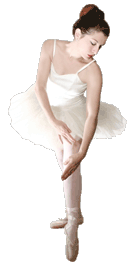A dulcimer is a member of the zither family, which includes autoharps, the Chinese qin, se, and zhen, the Japanese koto and wagon, the Korean kayagum, the Vietnamese dan tranh and dan bau, the Alpine zither, and the bowed zithers. The name dulcimer comes from the words dulce melos, meaning sweet sound. Like other box zithers, the dulcimer has strings, but no keyboard. While it has no frets, it may or may not have a bridge.
Some people distinguish the dulcimer as played with hammers and the psaltery as being plucked, but others believe that you can pluck your dulcimer and hammer your psaltery. Sometimes this instrument is called the hammer or hammered dulcimer, which helps distinguish it from a different instrument called the Appalachian dulcimer, which has a different shapes and including frets.

Dulcimer hammers can be crafted from a variety of materials and with a variety of features. Their heads may be hard or soft, and the shafts, stiff or pliable. Cane, wood, bamboo, plastic, and metal are used for the shaft in various locales, and the head may be covered with cotton, felt, wood, leather, or velvet. Some players have experimented with double-headed hammers in order to play multiple pitches with one hand. Strings are often made of piano wire. Many people choose a dulcimer that is tuned to a major scale, but dulcimers with a full chromatic scale are available.
The dulcimer has found a place in family entertainment as an accompaniment to a singer, dance music, including square dancing, folk music, church music, and popular music. If the movie August Rush had been set in England during the Depression, it might have been a dulcimer, rather than a guitar, that would have been the featured instrument, as it was popular with street buskers at that time.
There is a type of large Hungarian dulcimer employed in concerts and called a cimbalom. This is a chromatic instrument with a damper pedal and differs from the small, portable Hungarian dulcimer. The cimbalom has been written for by Igor Stravinsky, Carl Orff, and Pierre Boulez. Noted players include Alex Eppler, Viktória Herencsár, Junko Sakimura, and Kálmán Balogh.
